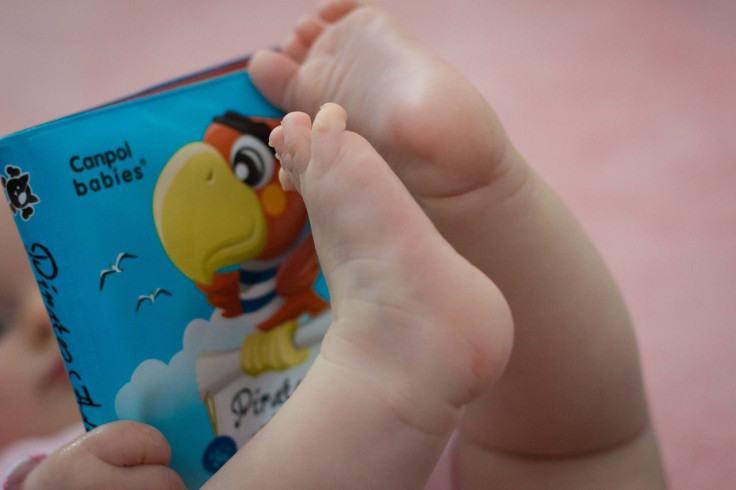Responding To Baby Babbles During Book Reading May Be Key To Language Development

Responding to your baby's coos and babbles during book reading may be the key to language development, according to new research published in Language Learning and Development.
The study, which examined how mothers respond to their one-year-olds during both reading and playtime, found that babies produced more syllable-like, consonant-like sounds during reading than they did when playing with puppets or toys. Not only that, but mothers were more responsive to these sounds while reading than they were when playing. "If we know what specific interactions are occurring between caregiver and child and we can link that to language outcomes, then it wouldn't just be telling parents, 'Read a lot of books to your kids,'" first study author Julie Gros-Louis said in a statement.
Gros-Louis continued: "That would definitely be important to tell them, but you could also identify specific behaviors to do during book reading."
The researchers examined the interactions of 34 mothers and their infants during three, 10-minute periods of puppet play, toy play, and book reading. They then coded each child’s vocalizations, except for distress cries and fusses, coughs, and grunts. The mothers' responses were coded for verbal content, such as acknowledgements ("mmm-hmm," "uh-huh"), questions, directives ("Push that"), play vocalizations ("Gotcha!"), naming ("It's a ball"), and imitations. And regardless of context, the mothers' responses to their baby's speech-like sounds were often imitations or an expansion of the sound.
For example, if the baby said, "Ba," the mother would respond with "Ba-ba" or "Ball." This happened, too, when the word had nothing to do with the story being read.
"A lot of research shows that book reading even to infants as young as six months of age is important to language outcomes, but I'm trying to explain why by looking at the specifics, which could be responding to speech-like sounds," Gros-Louis said.
A previous study done by Gros-Louis in 2014 found that parents who consciously engage or respond to their baby's babbling can speed up their language development.
"The current findings can contribute to understanding how reading to preverbal infants is associated with language outcomes, which is not well understood in contrast to reading interactions with older toddlers," researchers wrote.
What if your baby's not coo'ing or babbling? According to the Mayo Clinic, "while every child learns to speak at his or her own pace," there are general milestones for healthy language outcomes to look out for. For example, by the end of three months, your child might start smiling when you enter the room; making those coo'ing noises; startle upon hearing loud noises; and cry differently for different needs. By six months, he or she may start to make gurgling sounds; babble; move his or her eyes in the direction of sounds — and so on.
"Talk to your child's doctor if your child hasn't mastered most of the speech and language development milestones for his or her age or you're concerned about any aspect of your child's development," the Mayo Clinic said.
Source: Gros-Louis J, West M, King A. The Influence of Interactive Context on Prelinguistic Vocalizations and Maternal Response. Language Learning and Development. 2016.



























